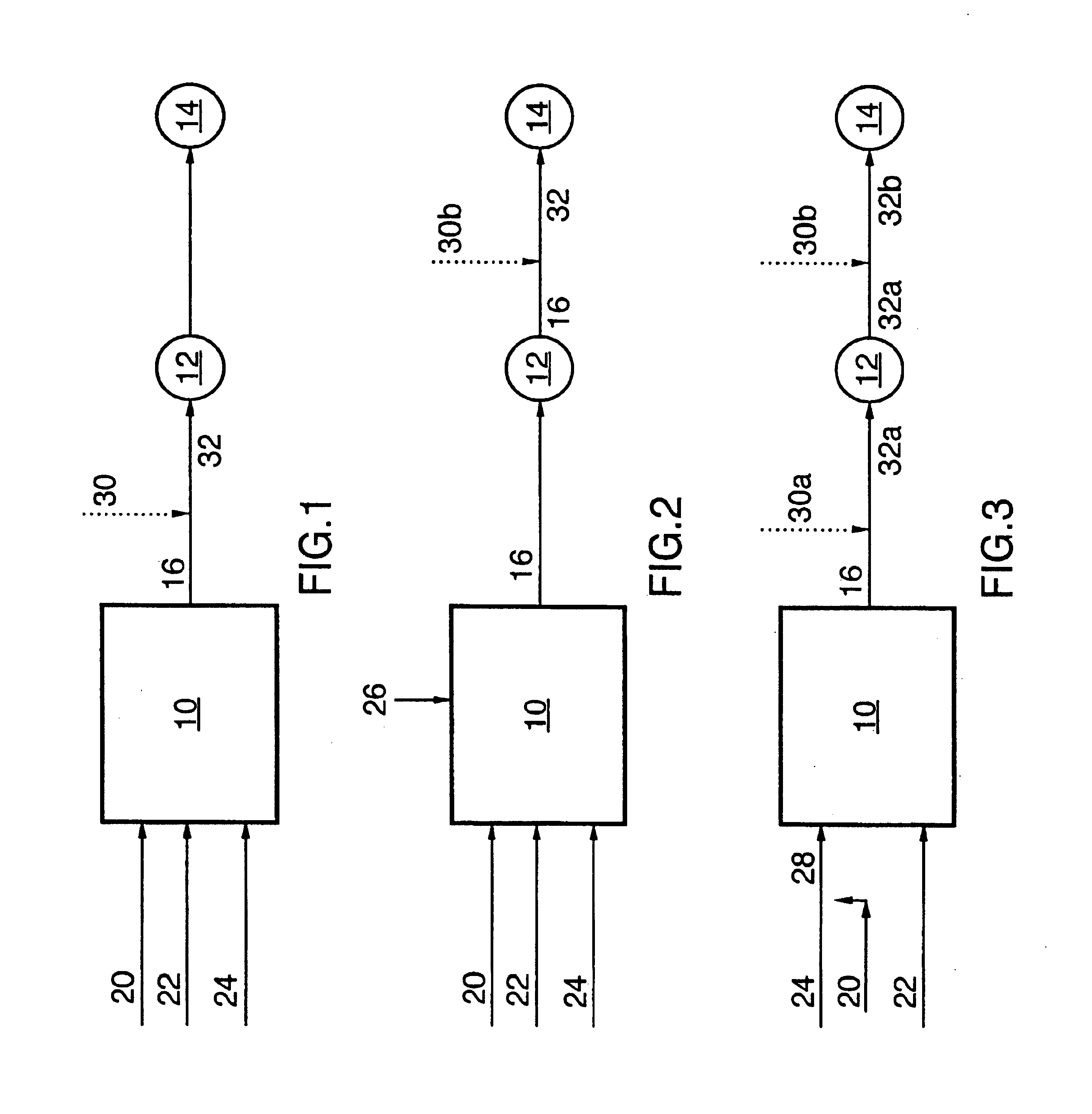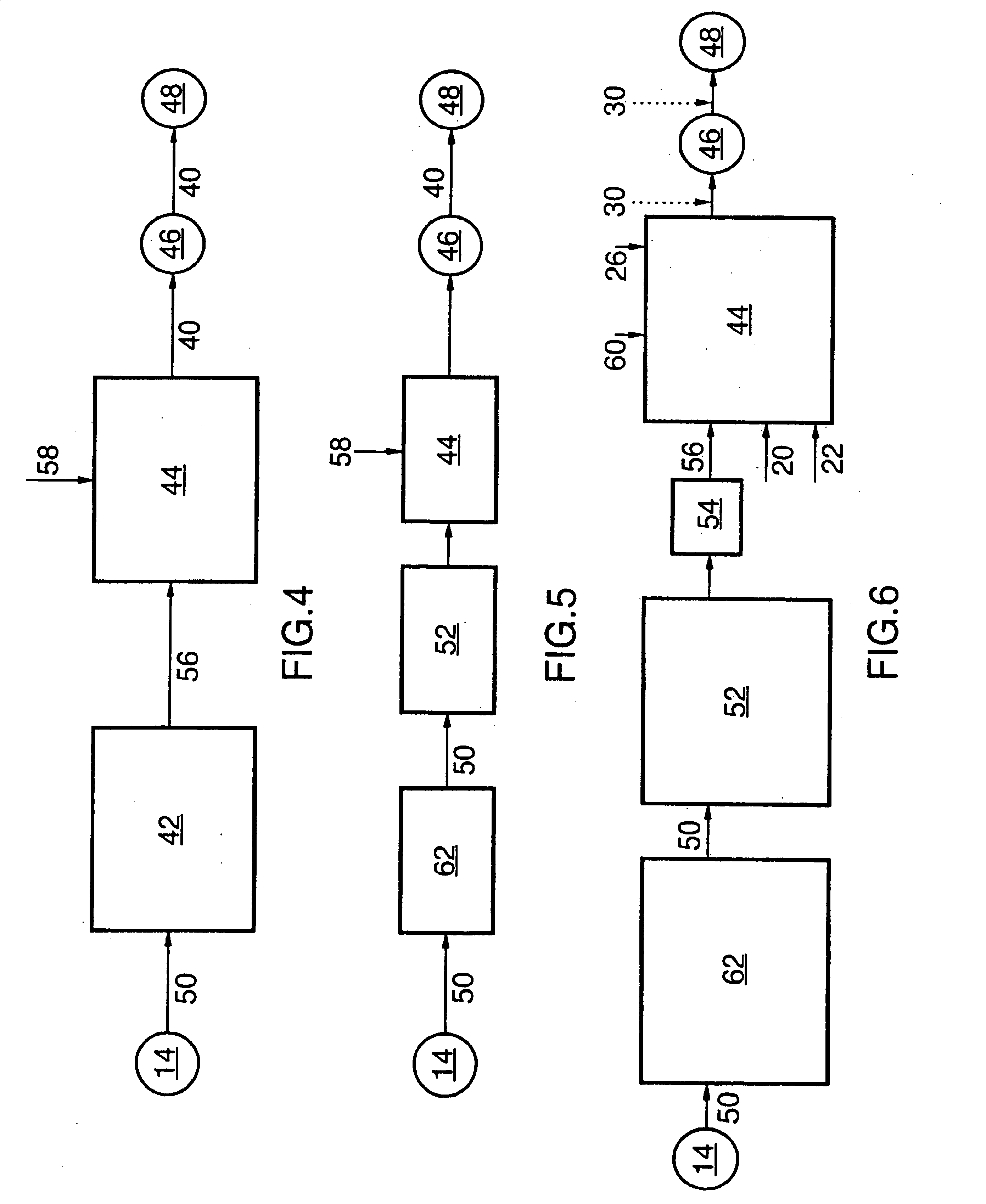Method for fracturing subterranean formations
a technology of subterranean formations and fracturing methods, which is applied in the direction of fluid removal, wellbore/well accessories, chemistry apparatus and processes, etc., can solve the problems of requiring special disposal procedures, affecting the speed at which a fracturing operation may be conducted, and increasing the cost of a fracturing operation, so as to reduce the amount of water required to fracture a plurality of wells in a single formation, the effect of increasing the speed of fracturing operation
- Summary
- Abstract
- Description
- Claims
- Application Information
AI Technical Summary
Benefits of technology
Problems solved by technology
Method used
Image
Examples
example 1
Fracturing fluids were prepared by combining N,N,N trimethyl-1-octadecammonium chloride (FAC-1X) with sodium xylene sulfonate (FAC-2X) in the concentrations which are set out below in Table 1.
TABLE 1FAC-1XFAC-1XFAC-2XFAC-2XL / m3%L / m3%3.00.33.00.37.00.75.50.5510.01.08.00.815.01.510.01.020.02.013.01.325.02.514.51.4530.03.018.01.835.03.520.02.040.04.020.52.05
In each case, the surfactants were mixed with water and then blended together with an overhead blender at low speed. The resulting fluid was placed in a pressured Fann 50 rheometer and the viscosity measured over a measured range of temperatures The results are set out in FIG. 7.
It will be understood that the data presented in FIG. 7 is exemplary in nature As can be seen from FIG. 7 a wide range of concentrations of anionic surfactants and surfactants containing a cationic group will result in gels having a high viscosity.
example 2
A viscoelastic fracturing fluid was prepared by mixing N,N,N trimethyl-1-octadecammonium chloride and sodium xylene sulphonate at a loading rate of 4 litres per cubic metre each. The resultant fracturing fluid had a viscosity on Fann 35 at 100 rpm of 5 cP, at 300 rpm of 7 cP and at 600 rpm of 10 cP. Proppant was added to the fracturing fluid at a rate of 1600 kg / m3 of clean fluid and the fracturing fluid was energized by injecting CO2 therein. The energized fluid was then pumped into a borehole and used to conduct a standard fracturing operation. After the fracturing operation, the flow back fluid was collected and pumped into a tank. The recovered fluid was subjected to a settling operation for about 24 hours during which time sand and fines in the recovered fluid settled out. Eighty per cent of the recovered fluid was then used for producing recycled fracturing fluid.
The volume of fluid required for a fracturing operation for the next borehole was determined and a sufficient amoun...
example 3
In order to demonstrate the effectiveness of a surfactant according to the instant invention to stabilize fines in a borehole, a capillary section test was conducted as is known in the industry. Pursuant to the test, a core sample from a Viking core which are known to contain clay fines was ground to a fine powder. Various fracturing fluids were prepared. Ground core sample was added at a rate of 2 g of the fine powder to 25 ml of the fracturing fluid The mixture was then stirred for 20 minutes to obtain a mixed solution at the end of 20 minutes 2 ml of the mixed solution was placed in a capillary suction test cell to commence the test. The test cell was in contact with a sheet of blotting paper. 2 wires (electrodes) were affixed to the blotting paper. Water is pulled from the test cell by capillary action and the time required for the water to move between the first and second wires is measured. The water coming into contact with the first wire (electrode) starts an electronic time...
PUM
| Property | Measurement | Unit |
|---|---|---|
| temperature | aaaaa | aaaaa |
| viscosity | aaaaa | aaaaa |
| viscosity | aaaaa | aaaaa |
Abstract
Description
Claims
Application Information
 Login to View More
Login to View More - R&D
- Intellectual Property
- Life Sciences
- Materials
- Tech Scout
- Unparalleled Data Quality
- Higher Quality Content
- 60% Fewer Hallucinations
Browse by: Latest US Patents, China's latest patents, Technical Efficacy Thesaurus, Application Domain, Technology Topic, Popular Technical Reports.
© 2025 PatSnap. All rights reserved.Legal|Privacy policy|Modern Slavery Act Transparency Statement|Sitemap|About US| Contact US: help@patsnap.com



